The Poplar-based artist’s piece will be unveiled on the estate for World Environment Day on June 5
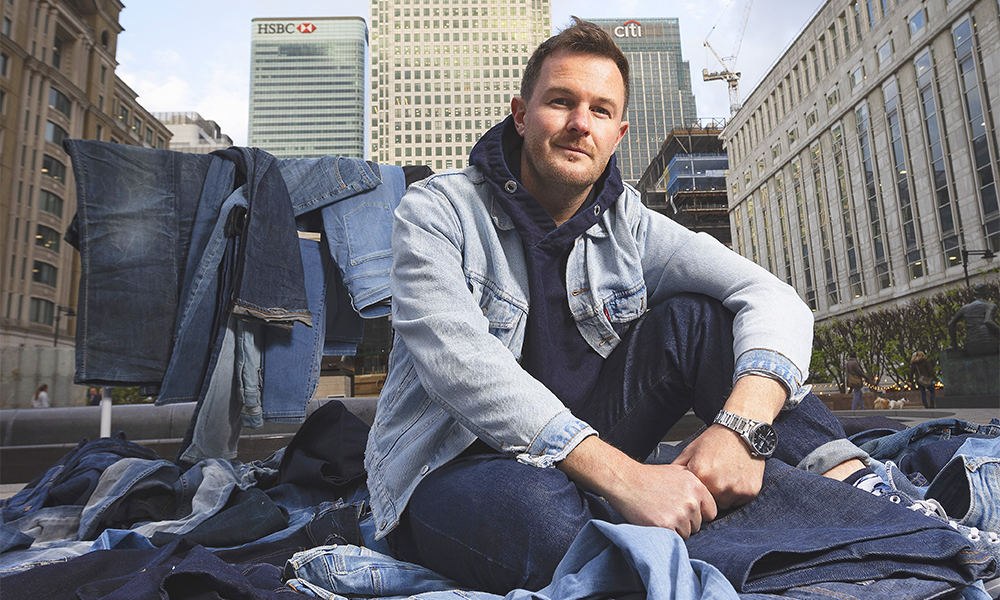
Subscribe to Wharf Life’s weekly newsletter here
Artist Ian Berry wants his work to be seen in real life – so apologies to anyone reading the this.
These reproductions might give you an idea of the kind of pieces he creates, but 2D reproductions on paper or digital screens just don’t cut it.
Based in Poplar, but hailing from Huddersfield via High Wycombe, Australia, Sweden and the Netherlands, the constant in Ian’s life is also his medium – denim.
Cutting, layering and gluing, he creates images and installations using a palette of jeans, constantly pushing to make the material accurately depict all manner of scenes, lighting effects, substances and surfaces.
The reason you’re looking at one of the pieces from Ian’s Behind Closed Doors series is that he’s just embarked on a project in partnership with Canary Wharf Group.
With used clothes donated at Jubilee Place last week, he’ll be stripping out the denim and using it to create an artwork, which will be unveiled on World Environment Day – June 5.
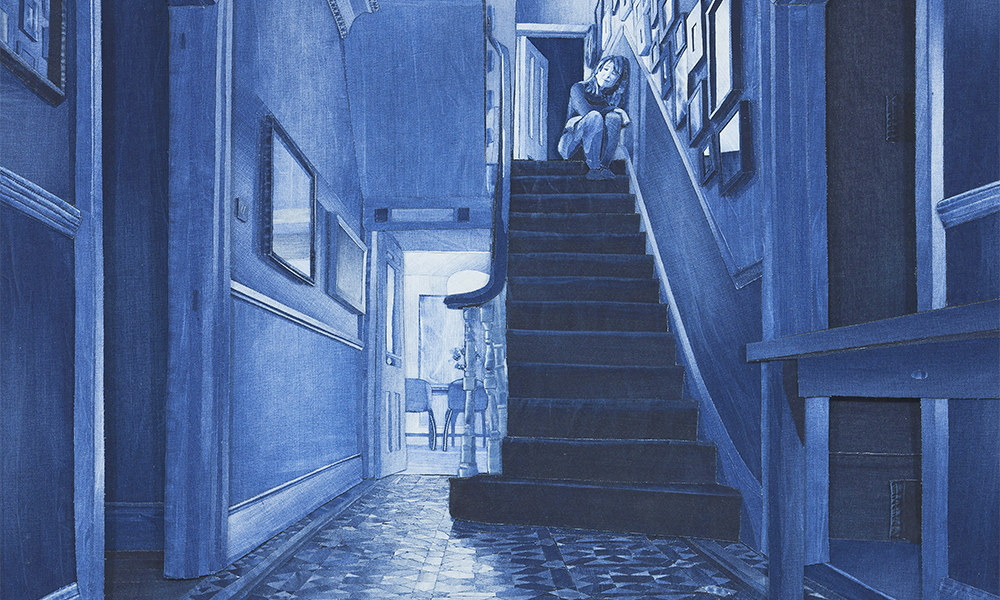
“My work needs to be seen in real life to be understood,” said Ian, who works from a studio overlooking the Limehouse Cut canal.
“I don’t really feel like a real artist to those who haven’t seen my work in that way.
“I’d spent the pandemic having seven different shows in other countries – most of them solo and that was tough with all the quarantines and shipping issues.
“I’d just got back from Chile when I got an email from Canary Wharf asking about this project.
“At first I thought it would be great just because I could walk there rather than having to take pieces on aeroplanes.
“I walk through the estate when I catch the Jubilee line, so I thought it would be a good opportunity to get my work seen by more people in real life.
“But it also sounded interesting because of the estate’s sustainability credentials – it’s something that’s taken very seriously whereas some other places just use it for marketing. I’ve not spoken much about sustainability in the context of my work.
“Others have – as recycling or upcycling – but when I started 16 years ago it wasn’t the buzzword it is now.
“The project I’m doing with Canary Wharf Group reflects sustainability and the environment – denim’s terrible in its impact at the end of the day – but there are also good things happening in the industry.
“I don’t believe there’s a material that better reflects contemporary times, good or bad.”
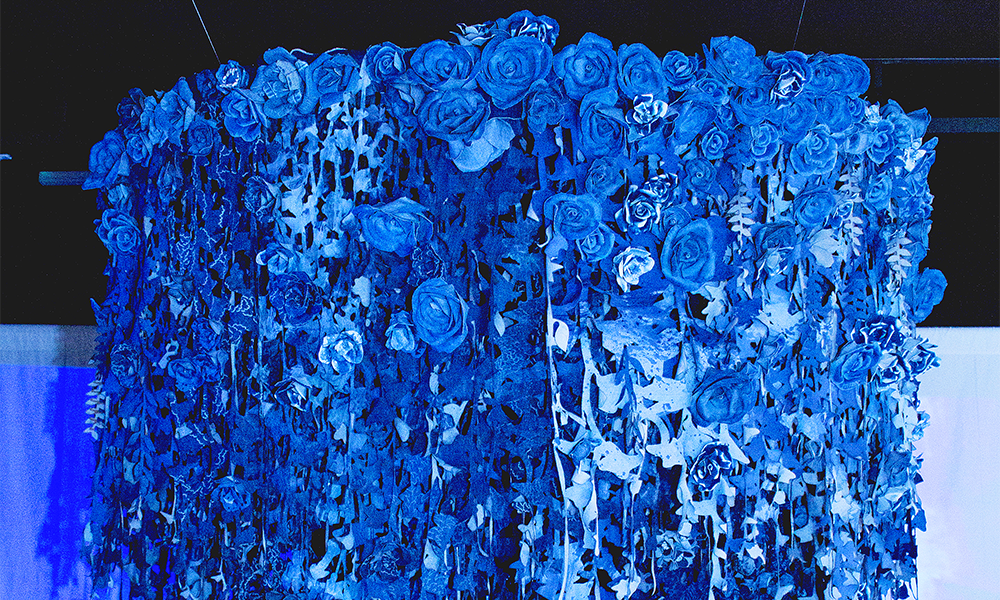
That really is the crux of things for Ian. While we talk it becomes clear there are all sorts of tensions at work between the artist, his medium and the subjects he chooses.
He tells me denim stands for freedom, democracy and the West to the point where it was banned in Russia and Belarus, where it’s still worn symbolically by dissenters.
Then again, it’s also the clothing of capitalism, excess and greed, with designer jeans selling for astronomical sums.
“I’m interested in people and in the denim industry, in workers’ rights,” said Ian. “I know everyone in the sector and there’s a lot of greenwashing going on – a lot of lying and they even tell me what their lies and exaggerations are. It’s frustrating.”
While Ian’s pieces are necessarily shot through with such issues – how noble attempts to pass on clothing to do good can come unstuck as second-hand garments wind up flooding foreign markets or simply get dumped overseas, for example – the denim he uses is also, importantly, just the stuff he uses to capture the world.
“I use it literally as my paint to represent contemporary life and issues you see every day,” he said.
“I have struggled for 16 years to know what to call them – they’re not paintings, they’re collages, but using just one medium.
“In some there are 16 layers of denim, so they are very sculptural, 3D pieces, and they can be very effective, with the texture of the denim as well. All that gets lost if people look on their phones or laptops.
“The magic in my work is finding the gradients in the denim, the fades, the cat’s whiskers – where it goes from indigo to lighter shades. You can connect them together and get quite a photo-realistic piece.
“Sometimes I achieve that too well and people don’t realise it’s jeans, but you need that ‘aha’ factor for people to connect.
“It happens in America especially, where people look for a while and then get closer and closer and, at about 50cm away, they say: ‘Oh, my God, it’s blue jeans’. I don’t want it to be seen as a gimmick, though.
“I hope people appreciate the craft, the love and attention to detail and they are amazed that the piece is made out of denim.
“I do set myself technical challenges – how to depict shiny, metallic objects or water using this matt material. But the main thing is the subject.
“With the Behind Closed Doors series I wanted to depict this busy city we’re living in, which can be lonely.
“That really connected with people – two out of three were saying: ‘Wow, that’s me’ – and it was kind of special.”
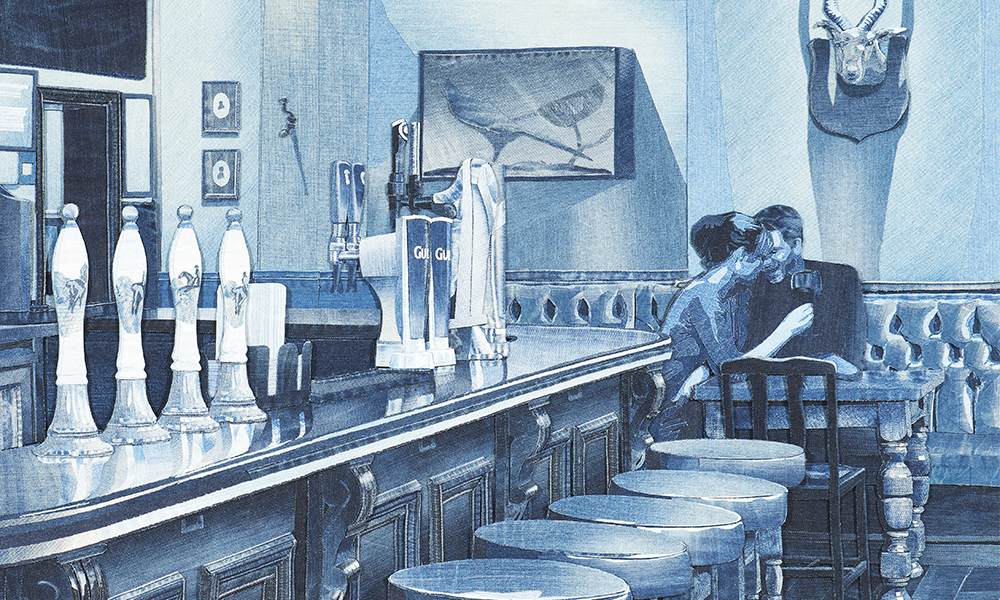
Ian, whose granddad was from east London, said he wasn’t sure what kind of piece he would create from the jeans donated in Canary Wharf.
He said: “Hopefully the piece I create will cause discussion and make people think.
“I can’t give too much away at this stage in case the idea changes but I think it’s going to have an element of my hanging Secret Garden, which turns plants into cotton, into jeans and then back into plants again.
“There’s a nod to sustainability in that – it’s nice because we can make something permanent out of the jeans.
“If you wear a pair for 10 years and then throw them away, it might be just about OK, but now we have a world where people buy them, wear them two or three times and throw them out.”
Ian’s piece will be added to the Wharf’s permanent art collection.
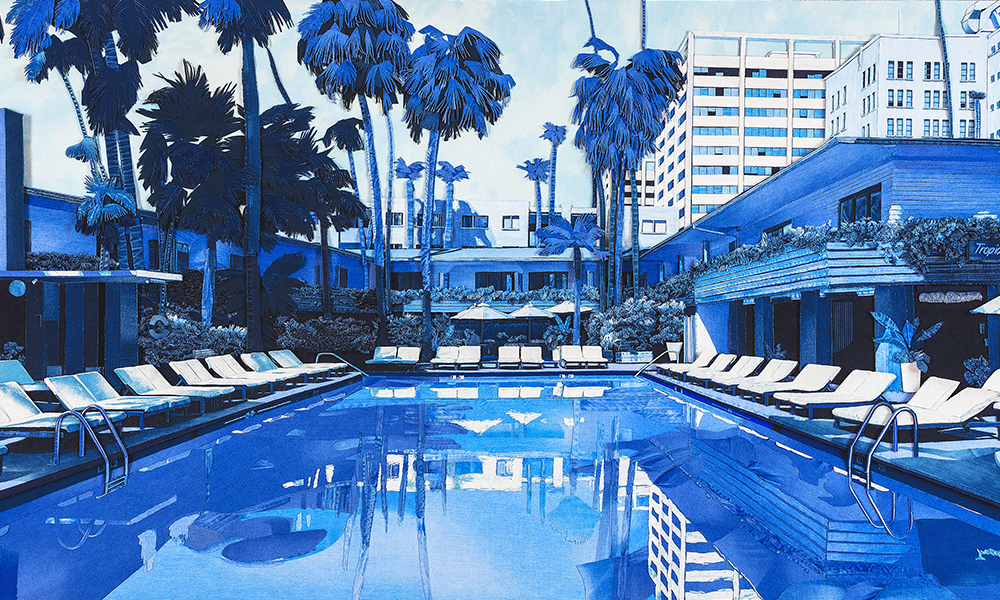
Read more: Find out where to make your own cloth with Freeweaver Saori Studio
Read Wharf Life’s e-edition here
Subscribe to Wharf Life’s weekly newsletter here
- Jon Massey is co-founder and editorial director of Wharf Life and writes about a wide range of subjects in Canary Wharf, Docklands and east London - contact via jon.massey@wharf-life.com



